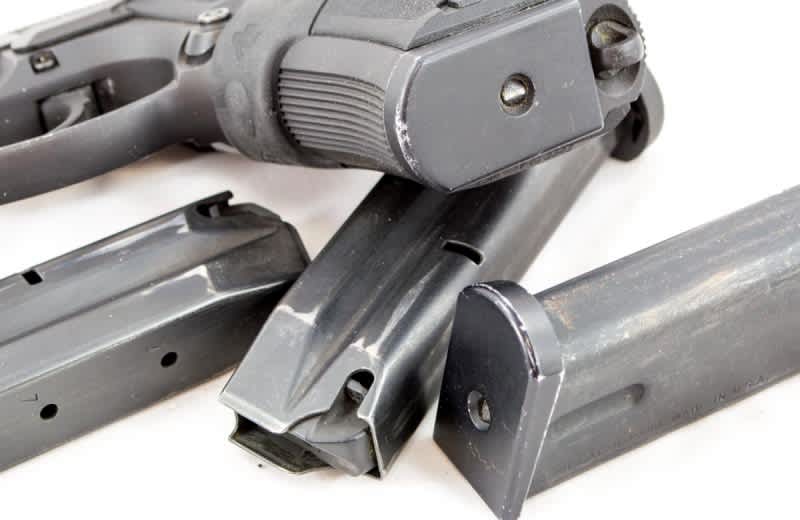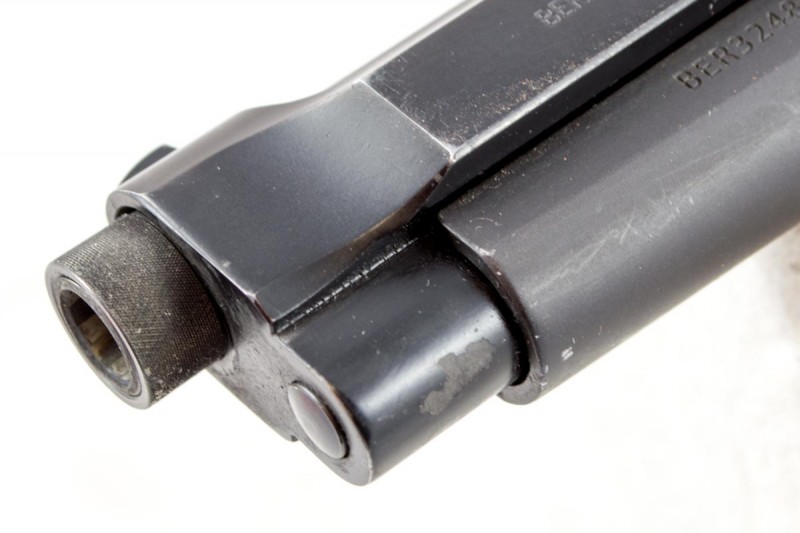5 Signs You’re Practicing with and Shooting Your Carry Gun Enough
Tom McHale 09.23.15

I’ve got a surefire way to tell who can shoot like Jerry Miculek and who’s a novice.
Here’s the trick: you just have to look at their concealed carry gun. If it’s all beat to hell in the right places, the odds are pretty good you’re dealing with an accomplished shooter.
I appreciate a pristine carry handgun as much as the next guy, but if it stays that way for more than a couple of days after purchase, it’s not getting used enough—or at least not in any productive capacity. It’s more than likely a safe queen.
Here are five areas where you might just notice a bit of extra wear and tear on a well-used concealed carry gun and its attendant gear. Keep in mind, I’m talking about wear from use here, and not wear from poor maintenance. You can do a masterful job of cleaning and maintaining your gun, but it it’s well-used, it’ll still develop signs of wear and tear. That’s OK. Just think of these marks like scars. Someone without any scars probably hasn’t experienced a whole lot of adventure, right?
1. Slide baldness
With my very first carry gun (a Beretta 92FS), I began to get heart palpitations when the Bruniton finish began to wear off the leading edges of the slide. When you holster a gun a few thousand times, pretty much any surface coating or metal treatment is going to start to wear through until you see shiny spots. While I haven’t done any scientific study on this, it seems like leather holsters are more aggressive when it comes to wearing finish. Maybe that’s because they rely more on friction than shape for gun retention. No matter, I love a good leather holster and will happily accept the wear penalty for its long-term use.

I know that your brand-new carry gun is pristine any shiny, but for your own well-being and benefit, be sure it develops some muzzle or slide wear marks. That means you’re practicing drawing from a holster—a lot!
2. Scratched and scraped magazines
If your carry gun magazines aren’t hitting the ground on a regular basis, you might not be practicing enough. If the sides of those magazines still have an unblemished finish, then maybe they’re not going in and out of your gun quite enough.
Admittedly, you have to keep “beat to hell” within reason for magazines. That’s the part of a semiautomatic pistol most likely to fail, so by “beat to hell” I’m really referring to cosmetics more than metal deforming damage. Wear marks? Absolutely! Scratched up base pads? Definitely! Bent feed lips? Not a chance. Use your magazines hard, just keep an eye on them so you catch function-impacting damage. Think of magazines as consumable and replaceable components. With use, you’re going to need to throw some out once in a while. That’s OK, though, as your life is worth the cost of a few magazines every couple of years.
3. Holster stains and lesser abuses
A good leather holster should be really nasty looking after some use, although a Kydex inside the waistband holster may remain beautiful well into its golden years. A well-used leather version will acquire creases, dents, and especially stains. What’s more attractive on a gun holster than some CLP and sweat stains after all?

Like magazines, you’ll have to keep an eye out on your carry holster. Stains, nicks, and dings are all fine and expected, but if your holster ever softens up to the point where it no longer reliably retains and supports your concealed carry gun, then it’s time to retire it. Give it a good Viking funeral—it should burn pretty well with years of soaked in gun oil.

4. Rail chips and dings
We’re blessed with access to a plethora of tiny rail-mounted devices. They’re so small and durable nowadays that it’s feasible to mount lights and lasers on rail-equipped carry guns. Most holster companies have tuned into this good idea and are now offering holster models compatible with said rail-mounted lights and lasers.
That rail up front is there for a reason! Make some use out of it and don’t get depressed when the addition and removal of lights or lasers starts to nick the finish. It’s just gonna happen.
5. File marks?
I have a classic carry gun in my collection. It’s a Colt 1903 Automatic chambered in .32 ACP. While I don’t use this one for concealed carry, it’s obviously participated in the concealed carry life for a very long time under a previous owner’s care. That person took a file to the fixed front sight, lowering it just a tad. I can only assume that was done to calibrate their specific ammo to the sights. That’s a serious concealed carry gun owner right there.

Don’t get me wrong, I’m not in any way advocating that we all whip out metal files and start removing metal from our carry guns, I’m just making an observation of how this concealed carrier deliberately applied a little tender loving wear to make this gun more effective for their specific use. While I never met this prior owner, I probably wouldn’t want to tangle with them.
Trust me, I know exactly how hard it is to use a brand new gun to the point where it begins to develop scars. It’s no different than spilling that first Big Gulp Mountain Dew in a brand new car. And, like the baptismal drink spill, it gets easier after the first damage is done, so get that gun out and use it like the tool it is.
Tom McHale is the author of the Insanely Practical Guides book series that guides new and experienced shooters alike in a fun, approachable, and practical way. His books are available in print and eBook format on Amazon.

